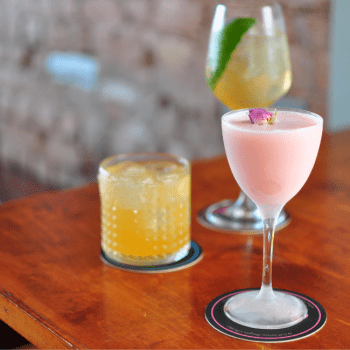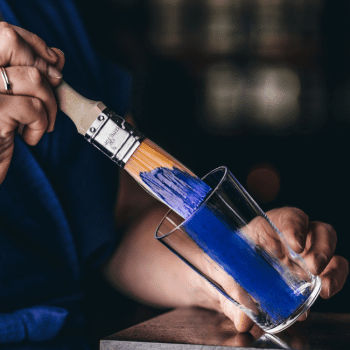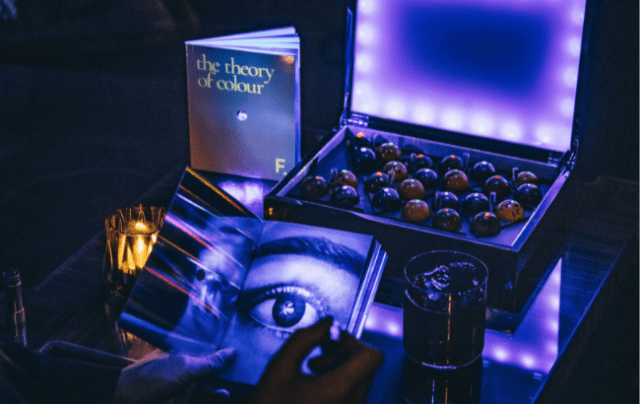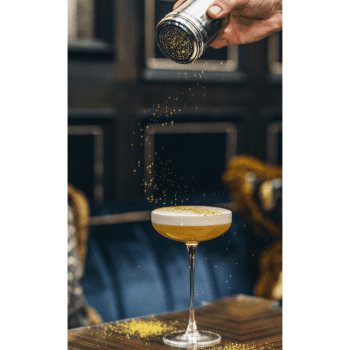Hue dares wins: Colour and cocktails
As much as flavour dictates why consumers choose cocktails, we decided to investigate how colour can also be a vitally important component in attracting bar customers to plump for particular drinks.

*This feature was first published in the July issue of The Spirits Business magazine.
As I watched the bartender pour my cocktail into the chilled Sling glass, three women perching next to me at the bar gasped. Their attention had been captured by the colour of the drink I was being served – a bright shade of Pacific blue, tinged so by a generous glug of blue curaçao. Although the women hadn’t seen which ingredients had been added to the cocktail, they declared that was what they would be ordering next.
While the so-called ‘I’ll have what’s she’s having’ effect is one that many bartenders like to use to generate a buzz around certain drinks, this is most often created with the use of eye-catching glassware or extravagant garnishes. However, recent trends suggest that an increasing number are turning to the colour of the liquid to draw in drinkers.
“On one hand, the consumer drinks with their eyes before the cocktail touches their lips,” notes Adhel Martínez, West Coast ambassador for Casa Lumbre Mexican spirits. “Many times, people just look around and ask, ‘ooh what is that?’ pointing at a colourful drink across the room, and many times they will say ‘I want that’, before you can answer their question. Social media plays a big part in this,” she says.
“Many people will look up the images of cocktails before visiting a bar and make up their minds about ordering something based off the image itself, many times with the purpose of taking their own picture to post. This is not necessarily a bad thing; after all, bartenders put a lot of effort and creativity into the aesthetic of a drink.”
‘Instagrammable’ drink
Ashley Eldefri, Casa Lumbre’s US East Coast ambassador, agrees: “Your typical social drinker wants to drink something ‘Instagrammable’ or easy to drink, and oftentimes that something is colourful and creatively garnished.” The hurdle, however, comes when guests order a cocktail based on the look rather than its contents, says Martínez. “They often don’t even look at the menu, then return the drink because there was an ingredient in there that they absolutely hated, even though it is listed on the ingredients list.”
Felix Cohen, owner of Daisy in Margate on England’s south east coast, has concerns to this effect with some of the drinks on his newly launched menu. “Our Pink Panther serve (pictured above) is definitely one that suffers from the misconception of colour representing flavour,” he says, referring to a pastel-pink serve that could easily be mistaken for a homage to the Barbie film. “People assume it’s going to be kind of creamy and strawberry-flavoured, and it’s absolutely not – it’s a big bruiser of a mezcal drink,” he says. “My team make sure people are aware to not just order it because it looks really pretty. It is a beautiful drink, but it’s not for everyone.”
There is a reason why my blue drink garnered such a reaction from the women in that bar. “Blue drinks have always been a draw for guests,” says Sophie Bratt, bar manager at Nobu Bar, Nobu Hotel London Portman Square. “Since Jacob Briars created the Corpse Reviver Number Blue we, as bartenders, have seen the fun and playful side of drinks that could usually be quite serious concoctions.”
Conversely, Adrian Mok, head bartender at Stereo, Experimental Group’s live music venue in London’s Covent Garden, is aware that the colour may initially raise concerns among some customers: “It is important for bars to consider the potential impact of colour on their target audience and the overall experience they aim to create. Some people might associate unusual colours with excessive artificial colouring or potentially overwhelming flavours.” However, he notes this can vary depending on the context and the overall presentation of the drink.
Bratt agrees: “At Nobu Bar, we have Saitama Lees, which in essence is a Gin Fizz twist, but we use blue spirulina to add a pastel-blue hue to the drink, as well as a vibrant blue ‘swish’ to the side of the glass. It’s amazing how many guests ask what the blue drink is, or order ‘the one with the blue swish’ after it is carried across the room.”

While sight and taste are not chemically linked in the same way as smell and taste, the effect it has on how we are attracted to certain drinks, and how we perceive flavour, is undeniable. According to research presented by Dr Terry E. Acree at a meeting of the American Chemical Society, many people are able to ‘see the flavour’ of foods, and the eyes have such a powerful role that they can trump the tongue and the nose. This leads some consumers to associate certain colours with specific flavours, with research consistently demonstrating the same associations. Drinks that boast a red or rosy hue are often perceived to be sweet, while green or yellow drinks are usually believed to offer sour or acidic notes. Salty flavours are associated with white, light blue, or grey colours, while black and purple are seen as an indication of bitterness.
Emotional reaction
At Fitz’s Bar in London’s Kimpton Fitzroy Hotel, the team has turned to the emotional reaction we have to colour combinations and intensities in the curation of its Theory of Colour menu. Customers are invited to choose from 14 serves that have been inspired by a different treatment of a single Dutch flower painting.
Bar manager Lorenzo Gavelli explains: “We manipulated the colour of the painting in different ways to essentially recreate colour relationships. We’ve gone from cool and recessive, analogues, monochrome, tetradic, different shades of black, and different shades of white, but,” he warns, “that doesn’t actually translate into what the final colour of the cocktail is. It’s more of an abstract idea, using the theory of colour to link taste and sight rather than assigning colours to each drink.”

Talking me through the menu, Gavelli demonstrates how the treatments of the painting have been represented with the use of ingredients. Riley’s Eye, for example, made using Bruichladdich Classic Laddie whisky, apricot and pistachio brandy, orange bitters, lemon and egg white, represents the use of three oppositional colours, which, he says “have the capacity of be antagonistic towards each other”. However, he notes, in the same company, they make each other appear brighter and more vivid. “This idea translates into the drink. They are flavours that don’t necessarily match, but when combined, they highlight one another.”
Meanwhile, the Yellow Chrome, which demonstrates singular monochromatic colour, “takes flavours that our brain tends to associate with the colour yellow, such as banana and passion fruit, which we then combine with Cognac and rum to create one single intense flavour”. Similar to the presence of colour, its absence can also be confusing for consumers to wrap their heads around.

Food and drinks writer Mel Giandzi tells me she finds the concept of flavourful serves void of colour “too confusing” to enjoy: “I love a clarified cocktail or a Milk Punch, but my brain and eyes can’t process all those flavours with no colour to match. I recently tried the transparent Kazamir cocktail at A Bar With Shapes For a Name, in London, made with Haku Vodka, peach yoghurt and absinthe, and it was the biggest mind trickery ever.”
Meanwhile, Cohen recognises and enjoys the cognitive dissonance that comes with colourless cocktails. “We have our Tomato Cosmo on the new menu, and there’s a lot of delight in a drink like that – people are expecting it to come out red, but because we’re using cherry tomato water it comes out almost translucent. We are delighted when we bring it out to the table and people say ‘are you sure this is the Tomato Cosmo?’, which is fun because the flavour is actually so intense.”
Related news
The Radicle brings $10 cocktails to Chicago
